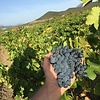Wine 101 - Ageing Wine
I wrote in my last 101 blog (Cabernet Sauvignon) about the seemingly hugely complex process behind ageing wine. I decided to have another look at it and solely focus on ageing for this post. So, here goes!
As I alluded to, not every wine improves with age, in fact, it seems most wines made today are designed to be enjoyed within the first few years of bottling. If you are thinking about ageing though, it is time to cash out; the more expensive a wine, the better it will age (in general, although again, not always). Why is this the case? Well, very high quality wines are often designed to age; if you drink them when they are young, the optimal flavours and taste may not have been achieved. The passing of time is needed; this allows the acids, sugars, tannins, amongst others, to mature and work themselves out to produce the best flavour and it is oxygen, well, the reduction of oxygen, that helps this process on its way. How the wine makers know how a wine will eventually taste, I don't know, but I suppose that is the art of wine making!
Here we go then, the complex part (that still baffles me somewhat - I wonder if I have gone about this the wrong way and more research on the contents of wine and how it is made, would have been a better starting point...). Wine has tannins, which comes from the skins, pips and stems of grapes, pigment and flavour compounds. Trying to get my head around these, I came across the following terms: dihydroflavonols, anthocyanin, flavanol monomers, stilbenoids and catechins, so I can't profess to fully understand this; but it is the interaction between these phenolics (tannins, pigment etc.) that gives the wine greater complexity (and more sediment) as the wine ages. This impacts the colour of the wine; red wines lose their colour, where as white wines, which have a lower concentration of phenolics become a golden colour as it ages.
Because it is oxygen that plays such a key role in the ageing, bigger bottles age better, which have a smaller ratio of oxygen trapped between the cork and the start of the wine (the headspace); headspace tends to be the same regardless of bottle size, so the bigger the bottle, the less of this there is when compared to the volume of liquid.
Between grape varieties, there are those that age better than others. For reds; Brunello di Montalcino, Australian Shiraz and Rioja are examples of those that do well. For white wine; Chenin Blanc and white Burgundy are two examples. Other factors to consider are the quality of the vintage and also how the bottles were closed (screw cap or cork); the permeability of the stopper plays a role. Wines with a cork will age better than those with a screw cap (as a rule of thumb). But...always a but with wine...you can find some super screw caps that do well with time. We enjoyed a 2009 screw cap Babiana before Christmas and it drank perfectly.
We came across an article the other day in The Telegraph about Pol Roger Champagne that had been unearthed 120 years after the cellar it had been kept in collapsed. Some of the bottles, amazingly, are still in a good condition. It's an interesting story, give it a read. Click here for the article
I'm still not quite there with truly understanding the chemistry behind this, but having looked into ageing, I definitely have a better idea of why you would choose to age some wines over others...maybe one to revisit...again.




